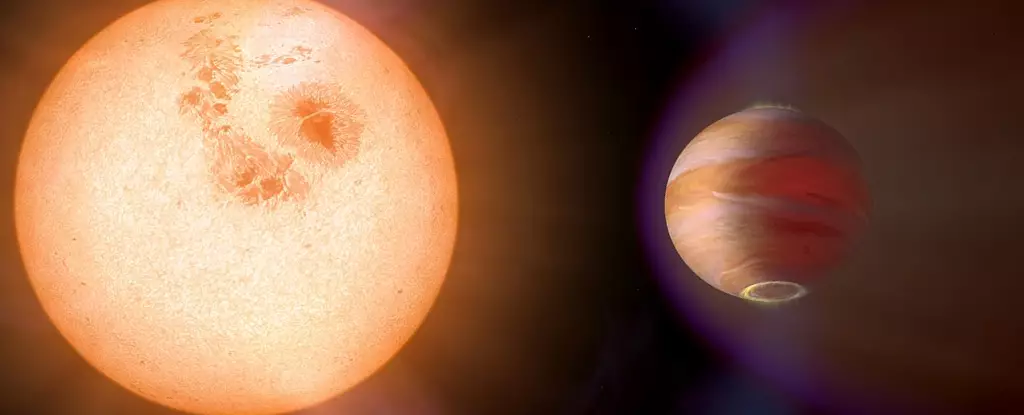The study of stellar metallicity—the abundance of elements heavier than helium in stars—has become a focal point in modern astrophysics. This is largely due to the realization that a star’s metallicity can provide crucial insights into its formation history and the processes that influence planetary system development. Astronomers, leveraging advanced techniques and technologies, are now able to measure the metallic content of stars with remarkable precision. This newfound capability has highlighted intriguing phenomena, particularly among co-natal stars that are presumed to originate from the same giant molecular cloud (GMC).
Astrophysicists have long expected that sibling stars born from a GMC would exhibit similar metallicities because they share a common environment. However, recent observations challenge this assumption, revealing that significant disparities in metallicity can occur. Understanding the underlying mechanisms driving these discrepancies has become essential for furthering our comprehension of stellar evolution and planetary formation.
Recent research conducted by Christopher E. O’Connor and Dong Lai has unveiled compelling evidence that the presence of rocky planets may be a pivotal factor influencing the metallicity of co-natal stars. As captured in their study, published on the pre-print server arxiv.org, they propose that the “pollution” of stars—a term borrowed from phenomena seen in white dwarfs—stems from rocky exoplanets, particularly ultra-short-period (USP) planets. These planets, which orbit their stars in mere hours, are believed to be rich in metals and represent a unique category of celestial bodies.
Most UPs are thought to share characteristics with Earth and are relatively small in size; however, their formations are surrounded by uncertainty. They may either form in more distant orbits before migrating inward or could represent the remnants of larger bodies stripped of their atmospheres by intense stellar radiation.
The rarity of these planets—present in only about 0.5 percent of Sun-like stars—raises questions about their origins and fates. Their extreme conditions, including surface melting due to proximity to stars and tidal locking, make them highly susceptible to being engulfed by their stellar hosts. The research strongly posits a correlation between the consumption of such rocky planets and the observed metallicity discrepancies in their parent stars.
Diving deeper into the mechanisms of engulfment, O’Connor and Lai propose that between 3 to 30 percent of co-natal Sun-like stars have likely devoured rocky planets that range from 1 to 10 Earth masses. The dynamic evolution of planetary systems presents numerous pathways through which such engulfment can occur. While various violent processes could drive these rocky bodies into their stars, the evidence indicates that only about 2 percent of solitary FGK stars exhibit signs of metallicity pollution from these destructive mechanisms.
The authors detail three primary scenarios that account for how ultra-short-period planets can be displaced towards their stars, culminating in their engulfment. High-eccentricity migration, where a planet’s orbit shifts due to gravitational interactions, presents one explanation while obliquity-driven migration captures another, wherein the gravitational influence of a companion planet plays a role in altering the orbits of USP planets.
The researchers’ models suggest that engulfment is not just a random event but rather a predictable outcome of the low-e migration scenario, hinting at a potential relationship between compact multi-planet systems and their metallicity outcomes.
While O’Connor and Lai’s findings provide a significant leap in understanding stellar pollution, they also acknowledge several caveats that warrant further investigation. For example, the signs of metallicity pollution may not persist indefinitely. Factors such as metal settling within stars could obscure the metallicity signature over time, potentially leading to an underrepresentation of polluted stars.
Moreover, alternate mechanisms that might inject planets into their stars—such as planet-planet scattering—have dedicated attention, revealing that only approximately 1 percent of stars can gain pollution through this means, despite the prevalence of Super-Earths.
The study also raises the query of whether Hot Jupiters (gas giants in close orbits) contribute to metallicity pollution. Although they share occurrence rates with USPs, their mass and chemical composition could dilute any detectable metallicity changes, complicating the pollution narrative.
O’Connor and Lai conclude that observational data supports the idea that stars hosting ultra-short-period planets tend to share kinematic properties with Milky Way field stars and are less likely to showcase previous planet engulfments. They affirm that polluted FGK stars likely host compact multi-planet systems, emphasizing the potential for complicated interactions among multiple planetary bodies.
As research in this field continues to evolve, the findings present new avenues to explore the intricate dance between stars and their planets. Understanding the dynamics of metal pollution will undoubtedly reshape our outlook on stellar evolution and the nature of habitable worlds in the universe.


Leave a Reply